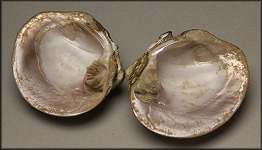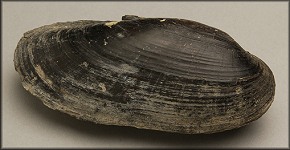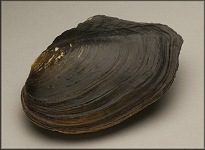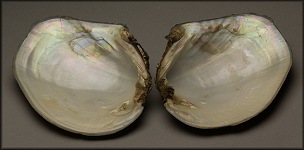| Freshwater Mussels In Illinois | ||||||||||||||||||||||||||||||||||||||||||||||||||||||||||||||||||||||||||||||||||||||||||||||||||||||||||||||||||||||||||||||||||||||||||||||||||||||||||||||||||||||||||||||||||||||||||||||||||||||||||||||||||||||||||||||||||||||||||||||||||||||||||||||||||||||||||||||||||||||||||||||||||||||||||||||||||||||||||||||||||||||||||||||||||||||||||||||||||||||||||||||||||||||||||||||||||||||||||||||||||||||||||||||||||||||||||||||||||||||||||||||||||||||||||||||||||||||||||
| By David F. Hess | ||||||||||||||||||||||||||||||||||||||||||||||||||||||||||||||||||||||||||||||||||||||||||||||||||||||||||||||||||||||||||||||||||||||||||||||||||||||||||||||||||||||||||||||||||||||||||||||||||||||||||||||||||||||||||||||||||||||||||||||||||||||||||||||||||||||||||||||||||||||||||||||||||||||||||||||||||||||||||||||||||||||||||||||||||||||||||||||||||||||||||||||||||||||||||||||||||||||||||||||||||||||||||||||||||||||||||||||||||||||||||||||||||||||||||||||||||||||||||
Introduction My first acquaintance with what are known as freshwater pearl mussels harks back to my youth. One hot summer’s day, I was wading in the local swimming hole along Tulpehocken Creek in Berks County, Pennsylvania feeling with my toes what felt to be a clam shell in the muddy sand. Many years later I was to renew acquaintance with this fascinating group of mollusks along the muddy banks of the Rock River, northeast of Byron, IL. while on a brief picnic break on the way to teach a summer extension course! This article will be limited to the Mississippi, Illinois and Rock Rivers where I have had about 90% of my observational and collecting experiences with mussels. Freshwater mussels, also known as freshwater pearl mussels, unionids and naiads, occur throughout much of the United States and Canada, and there are other groups in South America and Asia. Species even occur in Alaska and the Yukon, such as the Yukon Floater, Anodonta beringiana Middendorff, 1851! The term naiad comes from the mythical beautiful maidens thought by the Greeks to inhabit lakes, rivers and springs. However, this term is now infrequently used for mussels. Most freshwater mussels are in the family Unionidae, but a few such as the Spectaclecase, Cumberlandia monodonta (Say, 1829) and the Eastern Pearlshell, Margaritifera margarifera (Linnaeus, 1758) reside in the family Margaritiferidae. The major centers of distribution include the Tennessee, Cumberland and Black Warrior River Basins in the southeastern United States; the Mississippi, Illinois and Ohio River Basins in the Midwestern United States; and the Ozarks of northern Arkansas and southern Missouri. All these areas, and most others, have in common, vast terrains of carbonate rock, limestones and dolostones. The dissolved calcium bicarbonate in the waters passing through these regions is necessary for most species of freshwater mussels. It provides the basic material for the shells of adult individuals, including the pearly nacre that is so beautifully displayed on the shell interior. The outer layer is a tan or greenish to dark brown or black epidermis of organic composition. This pearly nacre was the source of the pearl button industry, as these were highly prized in the Orient before the widespread application of plastics during the 1950’s. The mussels were, of course, also noted for the occasional freshwater pearls. The mussels are still sought, not only for the pearls, but for nacre plugs which are implanted into pearl oyster beds of Japan, the Philippines and elsewhere to provide “seeds” for the pearl oysters. A “crowfoot bar” or brail, up to 17 feet long and with up to 200 4-pronged hooks is dragged over the bottom of the stream or river, and when it goes over a partially open mussel, the animal closes firmly on the hook, and can be dragged from the bottom by mussel fishermen. The species with thicker shells and larger size are more prized, such as the Washboard, Megalonaias nervosa (Rafinesque, 1820), the Three Ridge, Amblema plicata (Say, 1817) and the Purple Wartyback, Cyclonaias tuberculata (Rafinesque, 1820). Sadly, the numbers of species and individuals have declined drastically in recent years; this decline began locally, even in the late 19th century and continued more generally through the 20th century until now. Recent pollution control reversed this somewhat, but the advent of the European Zebra Mussels, Dreissenia polymorpha in the early 1990’s cast a renewed pall over the eventual fate of the pearl mussels. More about this later in the article. Of nearly 300 species known in North America, about 98, or 33% are either extinct or in very low numbers and endangered; another 40% are either threatened or growing scarcer and of special concern. About 3-4% have unknown status, leaving a little less than 25% currently fairly stable, but even some of these have declined in some areas. Some genera, such as Epioblasma, have been particularly hard-hit. Fully 24 out of 25 species are endangered or extinct in North America, and the 25th species is scarce and threatened, the Snuffbox, Epioblasma triquetra (Rafinesque, 1820) and endangered in some states such as Illinois. Of the nearly 300 species, about 80, or 27% occur, or have occurred, in Illinois. Only about 30% of these are of frequent occurrence in recent years, the rest being uncommon, threatened or endangered (possibly extirpated) species. About 30% are frankly endangered or threatened in Illinois, and most of these may be extirpated or nearly so. This presents a bleak picture, although there are a few brighter spots in it, as will be mentioned. At the close of this article, charts enumerating species present, or present in relatively recent history in Illinois, will be given. Mussel Population Factors Population densities are determined by bottom and river flow regime habitats; presence or absence of siltation and toxic wastes; absence or presence of parasitic host fishes; alien competing species; and harvesting practices. All of these affect occurrence of particular freshwater mussel species. Those species that prefer swifter, more aerated, clearer shoalwater habitats have suffered due to siltation and the construction of dams along many waterways, which cut down the water flow rates and also increase water depths. Examples of these are Epioblasma and species such as the Purple Wartyback, Cyclonaias tuberculata and the Black Sand Shell, Ligumia recta (Lamarck) which I found in the swifter portions of the Rock River in the 1990’s, but are almost extirpated from the numerously-dammed Mississippi and Illinois Rivers. Conversely, those which either prefer or can tolerate slower flow, greater depth and more siltation, have been able to maintain or increase populations (at least up to the invasion of Zebra Mussels). An example of the latter is the Giant Floater, Pyganodon grandis (Say). Heavy erosion, toxic coal mine wastes and toxic metals were sources of local mussel demise even as early as the 1880’s and 1890’s in the Ohio River. Studies in the 1900’s (Starrett, 1971) found high metal and pesticide levels in some freshwater mussel species of the Illinois River. How much this reckons in mussel decrease is not fully known in the Illinois and other rivers. Mussels are unique in that they have a parasitic larval host stage called a glochidium which attaches itself to the gills of particular host fishes, then develops and eventually detaches and drops off, hopefully in suitable habitat, as tiny seed mussels. Only about 30% of host fish species are well-known for particular freshwater mussel species – even these may not be exhaustive for some species. Certain species seem to attach to only one or two known host fishes, whereas others can use numerous hosts. A few such as the Squawfoot and the Pond Paper Mussel do not seem to have an obligate parasitic stage for the glochidia. One species is known to attach to a salamander, the mud puppy. This mussel is Simpsonaias ambigua (Say). Obviously, those mussels which have the twin good fortunes of wider habitat tolerance and larger numbers of common host fishes are at a greater advantage for maintaining large populations. Between the early 1970’s and 1990’s, attempts were made to improve water quality in the rivers; this began to have a salubrious effect on some mussel species in the Illinois rivers. Starrett (1971) and Warren (1995) remark that about 50% of the freshwater mussel species in the Illinois River disappeared between 1912 and 1966, probably due to the damming, pollution and siltation, which extirpated or decreased populations of mussel species preferring swifter, shallower and clearer waters. However, some improvement in populations of extant mussels occurred there in the 1980’s. Unfortunately, during the early and middle 1990’s, there was an enormous spread of the European Zebra Mussel, into the Mississippi and Illinois River basins from source areas in the Great Lakes. This mussel encrusts everything from native mussels to beer and pop cans. It harms the native mussels by interfering with valve opening and closing; competing for the filterable food supply to the extent of almost completely clarifying waters; and by the simple addition of weight, exhausting the mussel. The more mature mussels, being larger, have been the main unfortunate recipients of this unwelcome burden. Apparent severe declines have occurred in our native mussels, and it remains to be seen whether these species can partly recover. The Asian Clam, Corbicula fluminea is not so widespread in Illinois, but has been implicated on the West Coast and in the southeastern United States as one possible factor of mussel decline there. I have seen this species together with Elliptio in Florida sinkholes at Maitland in the early 1990’s. It would be interesting to see if Elliptio still occurs there. There are some small bright spots. When I visited some Mississippi areas this past fall, I noted a number of juvenile and half-grown individuals of at least five mussel species and very few Zebra Mussels. Apparently, this species has greater cyclicity in population than was thought to occur, according to Dr. Richard Anderson, our resident expert on the freshwater mussels, and is now at low levels. Also, the Zebra Mussel does not tend to live in backwater areas of the rivers, and some of the mussel species seem to have found refugia there and have been able to breed, utilizing fish species in that area. Third, mussel species occur in smaller tributaries to the main rivers, which the Zebra Mussel has not been able to exploit. At least 14 species have been recorded in McDonough and Fulton Counties by surveys of tributaries in the mid-1990s to present (INHS and personal records) including White Heelsplitter, Lasmigona complanata; Lilliput, Toxolasma parvus; Squawfoot, Strophitus undulata; Mapleleaf, Quadrula quadrula; Pimpleback, Quadrula pustulosa; Plain Pocketbook, Lampsilis cardium; Fat Mucket, Lampsilis siliquoidea; Fragile Paper Shell, Leptodea fragilis; Paper Pondshell, Utterbackia imbecilis; Wabash Pigtoe, Fusconaia flava; Buckhorn or Pistolgrip, Tritogonia verrucosa, generally a scarcer species; Giant Floater, Pyganodon grandis; Three Ridge, Amblema plicata; and Pondhorn, Uniomerus tetralasmus. Perhaps other species occur. It does not take much imagination to realize that host fish species could eventually redisperse larval stages into the main rivers again, particularly if some way could be found to control the Zebra Mussel there. I hope that this has been an interesting discussion for all of you. Charts enumerating species are given at the end of this article. Unfortunately, I do not have many specimens of pearl mussels, presently, for trade, due to the above obvious factors. Also, I do not generally collect living mussels and depend mostly on fresh specimens cast up on the muddy shores of streams and rivers.
|
||||||||||||||||||||||||||||||||||||||||||||||||||||||||||||||||||||||||||||||||||||||||||||||||||||||||||||||||||||||||||||||||||||||||||||||||||||||||||||||||||||||||||||||||||||||||||||||||||||||||||||||||||||||||||||||||||||||||||||||||||||||||||||||||||||||||||||||||||||||||||||||||||||||||||||||||||||||||||||||||||||||||||||||||||||||||||||||||||||||||||||||||||||||||||||||||||||||||||||||||||||||||||||||||||||||||||||||||||||||||||||||||||||||||||||||||||||||||||
Freshwater Mussel Species Recently Known in Illinois Rivers
Taxa Present or Once Present in Illinois, Mississippi and Rock Rivers The following data comes from Starrett (1971), Warren (1995), Cummings and Mayer (1997) and personal records of freshly dead mussels along these rivers. Personal data from the Rock River northeast of Byron five miles is of special interest as it adds one species to the Cummings and Mayer (1997) list, Cyclonaias tuberculata. It occurred in an assemblage with Ligumia recta, Lampsilis siliquoidea, Quadrula pustulosa, Obliquaria reflexa (also common down river at Castle Rock), Toxolasma parva, Truncilla and Lampsilis cardium. The first three species are more typical of swifter, less-dammed streams and are now scarce or absent in the Mississippi and Illinois Rivers. This data is from the early 1990’s.
Acknowledgments Appreciation is expressed to Dr. Richard Anderson, Chairman, Department of Biological Sciences, Western Illinois University, Macomb, IL. for encouragement, identifications of certain mussels and aid in literary sources. I also thank Larry Dean, Visual Productions, Western Illinois University for photographs of selected mussels. |
||||||||||||||||||||||||||||||||||||||||||||||||||||||||||||||||||||||||||||||||||||||||||||||||||||||||||||||||||||||||||||||||||||||||||||||||||||||||||||||||||||||||||||||||||||||||||||||||||||||||||||||||||||||||||||||||||||||||||||||||||||||||||||||||||||||||||||||||||||||||||||||||||||||||||||||||||||||||||||||||||||||||||||||||||||||||||||||||||||||||||||||||||||||||||||||||||||||||||||||||||||||||||||||||||||||||||||||||||||||||||||||||||||||||||||||||||||||||||





